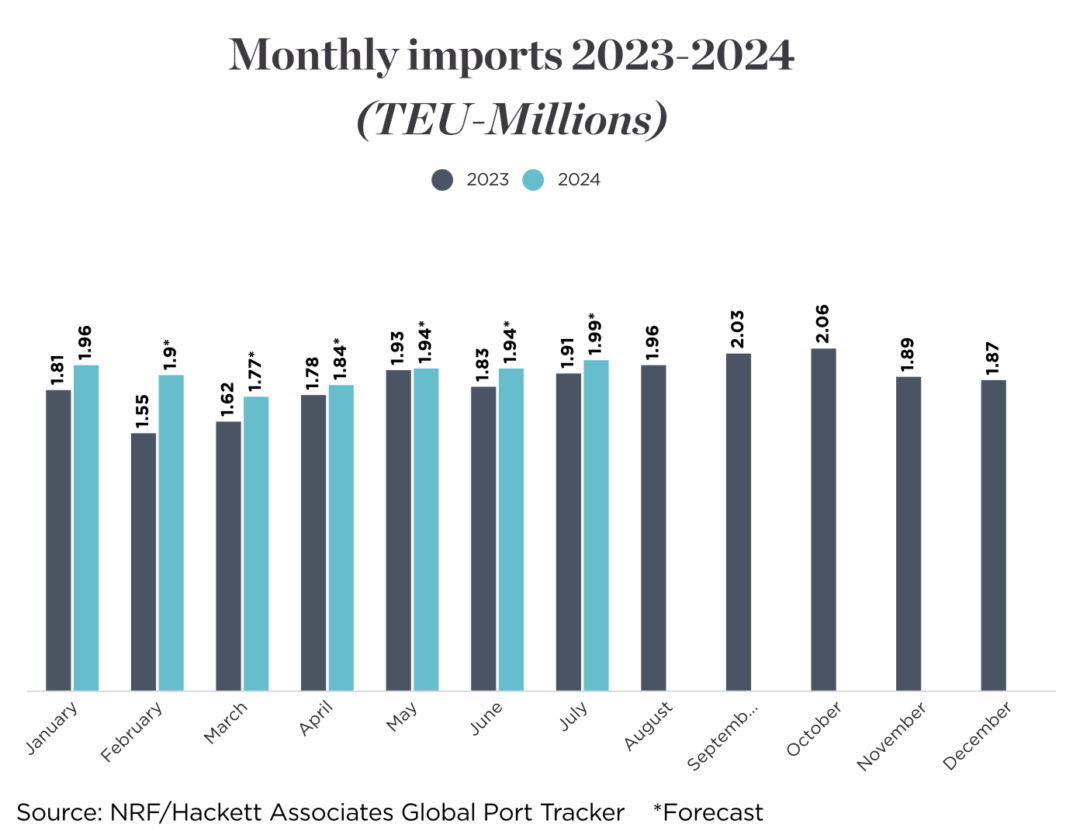Import levels have adjusted to Red Sea disruptions, numbers show
Initial surge in shipping prices and delays is now subsiding, as carriers find new routes, NRF and Hackett say

Import levels are returning to normal after adjusting to Red Sea disruptions, as inbound cargo volume at the nation’s major container ports remains on track to show year-over-year increases through the first half of 2024, according to a report from the National Retail Federation (NRF) and Hackett Associates.
The numbers show that global supply chains are coping with the ongoing Houthi rebel attacks on commercial vessels in the Red Sea by following new routes, Hackett Associates Founder Ben Hackett said in a release.
The initial surge in shipping prices and delays is now subsiding, as carriers are avoiding the Red Sea by sailing around Africa’s Cape of Good Hope, shifting cargo from Atlantic to Pacific lanes, or transiting the Panama Canal, he said.
“Despite the shipping disruptions cause by Houthi rebels in the Red Sea, the global trade of consumer goods, industrial materials, and bulk commodities continues to flow relatively smoothly,” Hackett said. “Fear of an inflationary impact due to the raised cost of transportation should be alleviated by now. Retailers and their carrier partners are adjusting to the re-routings and new schedules, which add new costs but those can be partially offset by not having to sail up the Red Sea and not having to pay Suez Canal transit costs. This will continue until there is a resolution and freedom of navigation through the Red Sea and Suez Canal.”
U.S. ports covered by the “Global Port Tracker” report handled 1.96 million twenty-foot equivalent units (TEUs) in January, the latest month for which final numbers are available. That was up 4.7% from December and up 8.6% year over year. Based on forecasts, the first half of 2024 is now expected to total 11.5 million TEU, up 7.8% from the same period last year. Imports during 2023 totaled 22.3 million TEU, down 12.8% from 2022.
Global Port Tracker, which is produced for NRF by Hackett Associates, provides historical data and forecasts for the U.S. ports of Los Angeles/Long Beach, Oakland, Seattle and Tacoma on the West Coast; New York/New Jersey, Port of Virginia, Charleston, Savannah, Port Everglades, Miami and Jacksonville on the East Coast, and Houston on the Gulf Coast.
Related Articles
Copyright ©2024. All Rights ReservedDesign, CMS, Hosting & Web Development :: ePublishing